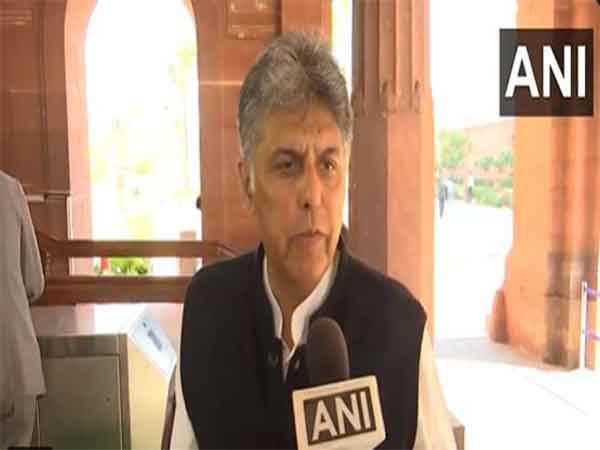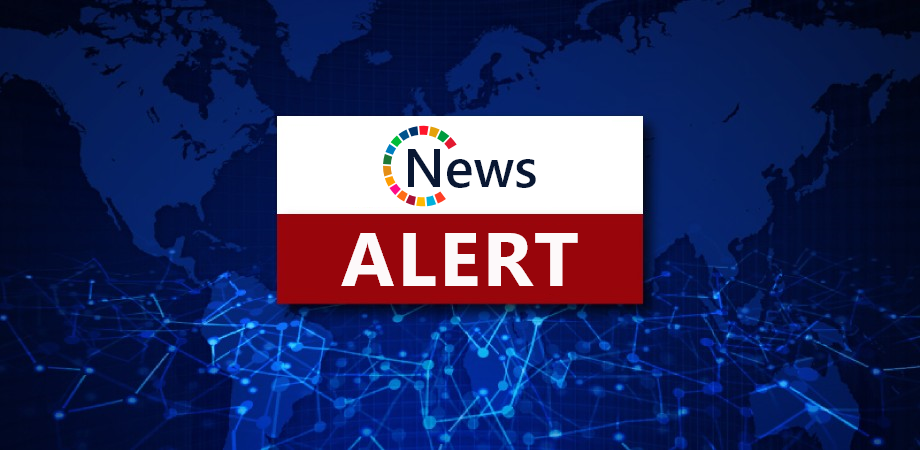
Revisit Every OncLive On Air Episode From March 2025 In case you missed any, below is a recap of the episodes of OncLive On Air ® that aired in March 2025. Check out our podcast page for a full episode lineup and to stay up to date with all the latest releases! In this exclusive episode , Marwan G. Fakih, MD, of City of Hope in Duarte, California, discussed the significance of the January 6, 2025, FDA approval of sotorasib (Lumakras) plus panitumumab (Vectibix) for the treatment of adult patients with KRAS G12C–mutated metastatic colorectal cancer (mCRC) who have previously received fluoropyrimidine-, oxaliplatin-, and irinotecan-based chemotherapy.
“Approximately 4% of patients with mCRC have KRAS G12C mutations,” Fakih said in the interview. “The treatment [options] for those patients—similar to other patients with KRAS mutations—are limited after progression on fluoropyrimidine-, oxaliplatin-, and irinotecan-[based chemotherapy] and bevacizumab [Avastin]. The advent of a targeted therapy for [patients with mCRC harboring] KRAS G12C mutations with the combination of sotorasib and panitumumab, which [had] an updated objective response rate of 26% [in the phase 3 CodeBreak300 study (NCT05198934)], provides hope for these patients.

” In this episode of How This Is Building Me , host D. Ross Camidge, MD, PhD, sat down with Tillman Nechtman, PhD, a lung cancer widower. Drs Camidge and Nechtman discussed Nechtman’s experience as a caregiver for his wife Laura during her lung cancer treatments; the personal and family challenges that arose during her battle with cancer; and Nechtman’s continued patient advocacy efforts to advance lung cancer research.
“I hope I can still be there for other patients, other advocates, to honor the work that Laura did, because she said right up front: ‘I’m not going to get [lung cancer] and not have it count,” Nechtman shared. “That’s what I wanted to dig into, because I feel like we talk about patients, [physicians] who look after patients, and scientists..
.but the caregiver is kind of omnipresent and doesn’t usually get the light shown on them very much,” Camidge added. In this episode , William D.
Tap, MD, of Memorial Sloan Kettering Cancer Center in New York, New York, discussed the significance of the February 14, 2025, FDA approval of vimseltinib (Romvimza) for patients with symptomatic tenosynovial giant cell tumor (TGCT), top findings from the phase 3 MOTION trial (NCT05059262), and the continued importance of multidisciplinary collaboration when further integrating this targeted therapy into clinical practice. “People live with [TGCT] for long periods of time and can experience tremendous symptoms and a lot of disability from it, so to have medical options..
.is critical,” Tap emphasized. In this episode , Virginia Kaklamani, MD, DSc, of The University of Texas Health Science Center and the Mays Cancer Center in San Antonio, explained the unique mechanism of action of inavolisib (Itovebi), where this agent fits into the treatment paradigm for patients with hormone receptor–positive metastatic breast, and the importance of early breast cancer biomarker testing.
“Biomarker testing is extremely important,” Kaklamani emphasized. “If we don’t test for biomarkers, then we don’t know [whether] our patients are eligible for PI3K inhibitors, medications like elacestrant [Orserdu] and so forth.” In this episode of MedNews Week ’s Oncology Unplugged , host Chandler Park, MD, ofNorton Cancer Institute in Louisville, Kentucky, sat down with Petros Grivas, MD, PhD, of Fred Hutchinson Cancer Center and the University of Washington School of Medicine in Seattle, to discuss updates to the management of muscle-invasive bladder cancer, including data from the phase 3 NIAGARA trial (NCT03732677) and the evolving role of neoadjuvant PD-1/PD-L1 inhibitors and HER2-targeted therapies.
“I look forward to the future where we can cure all patients,” Grivas shared. “That would be an ideal dream, a vision for the future. We’re not there yet, but we’re all working hard for this to happen.
It takes a village. It takes multiple stakeholders. It takes laboratory-based investigators.
..clinical investigators, translational scientists, patients and their families, advocates, statisticians, and regulatory bodies.
Multiple different stakeholders are part of this evolving field.” “When we have positive studies, we’re all excited, clapping hands, but sometimes we learn from the negative studies as well,” Park contextualized. In this episode , Nataliya Uboha, MD, PhD, of the University of Wisconsin Health and the University of Wisconsin School of Medicine and Public Health in Madison, highlighted the significance of the FDA approval of first-line tislelizumab -jsgr (Tevimbra) plus chemotherapy for patients with unresectable or metastatic esophageal squamous cell carcinoma (ESCC) with a tumor PD-L1 expression of at least 1, top findings from the phase 3 RATIONALE-306 trial (NCT03783442), and where this agent now fits into the treatment paradigm for patients with ESCC.
“We should be able to easily incorporate this [regimen] into our treatment paradigms,” Uboha explained. “Tislelizumab can be combined with different chemotherapy backbones and should be built into treatment guidelines for patients with ESCC.” In this episode , Ashkan Emadi, MD, PhD, of the West Virginia University (WVU) School of Medicine and the WVU Cancer Institute in Morgantown, discussed the efficacy of venetoclax (Venclexta) plus pegcrisantaspase in pretreated patients with relapsed/refractory acute myeloid leukemia (AML), highlighting data from a phase 1 study (NCT04666649) of the combination in this population.
“[Pegcrisantaspase has] a novel mechanism [of action] that could overcome resistance to prior exposure [to] venetoclax,” Emadi stated. “We hope that in the [upcoming] phase 2 study, by enrolling a higher number of patients, we [can] learn more about this combination, [including] the genetic background [and] cytogenetic/mutational landscape of AML; the rate of complete response [(CR) with the combination], the durability of CR [with the combination], and [which] patients could be candidates for allogeneic stem cell transplant.” In this episode of How This Is Building Me , host D.
Ross Camidge, MD, PhD, was joined by Alexandra Rink, PhD, of the Princess Margaret Cancer Centre, the Princess Margaret Research Institute, and the University of Toronto in Canada. Drs Camidge and Rink talked through the influence that Dr Rink’s early interest in forensics had on her eventual career as a medical physicist, the ways that physics factors into radiation therapy delivery, and how multidisciplinary stakeholders can collaborate to deliver optimal and individualized patient care. “I’m going to talk to somebody who doesn’t just deal with the biology of life, but actually the forces that move the universe,” Camidge said in his introduction of Rink.
“I had no idea you can do a physics degree and then somehow apply it literally to medically driven research,” Rink said of her early career evolution. “That piqued my interest.” In this episode , Ibrahim T.
Aldoss, MD, of City of Hope, and Elias Jabbour, MD, of The University of Texas MD Anderson Cancer Center in Houston, talked through the clinical implications of data from a post hoc subgroup analysis of the phase 3 PhALLCON trial (NCT03589326) investigating the use of ponatinib monotherapy following combination treatment with a TKI plus chemotherapy in patients with newly diagnosed Ph-positive acute lymphoblastic leukemia. “The fact that [so many] patients started ponatinib monotherapy is a reflection that patients gained efficacy benefits when they completed consolidation, [and then for] maintenance, the treating physician felt they would benefit from continuing a single-agent TKI,” Aldoss explained. “In addition, there were no major adverse effects.
[Patients] were able to maintain [treatment with] the TKI [for the entire] duration of treatment, and they didn’t proceed to transplant before the maintenance therapy.” “The study has established ponatinib as the standard of care [for these patients],” Jabbour noted. “I’ll still be cautious [because of its] cardiovascular risk factors.
Moving forward, it’s opened the door for combinations with mainly immunotherapy, as we’re doing right now.” In this episode , Xiuning Le, MD, PhD, of The University of Texas MD Anderson Cancer Center, highlighted top data and clinical implications from the phase 3 HARMONi-2 trial (NCT05499390) of ivonescimab vs pembrolizumab (Keytruda) in patients with locally advanced or metastatic, PD-L1–positive non–small cell lung cancer without sensitizing EGFR mutations or ALK translocations. “Moving forward, ivonescimab could serve as a good combination drug, just like we’ve seen with pembrolizumab [in combination with] chemotherapy and antibody-drug conjugates,” Le said.
“Ivonescimab had a good safety profile and good tolerability. It’s not beyond the imagination that, [if] we know this drug is superior to PD-1 monotherapy, we can start to [examine] combinations and bring novel treatment ideas to the field to benefit different types of patients at different stages [of disease]. That’s why the data from HARMONi-2 are so exciting: we see an immediate plan.
We see a big field potentially opening in the future.” In this episode of Oncology Unplugged , host Chandler Park, MD, sat down with Ann S. LaCasce, MD, MMSc, of Dana-Farber Cancer Institute in Boston, Massachusetts, to talk about LaCasce’s career journey as a woman in oncology, key developments in the treatment of patients with Hodgkin and non-Hodgkin lymphoma, and LaCasce’s role in founding the international Women in Lymphoma network.
“[Mentorship] opportunities are absolutely critical,” LaCasce emphasized. “It’s somebody seeing potential in you and saying: ‘hey you might be good for this,’ and you need that support or encouragement to move forward..
. It’s about having someone take a chance on you and say, ‘I know you can do this. Meet this person.
’ As a program director, I love connecting people [and saying to people], ‘I know what you’re interested in. You need to meet this person, because the two of you would have something in common.’ That’s one of the most satisfying parts of being a mentor, is connecting people.
” “So much [of the medical school journey] is the environment around us,” Park agreed. “That person you talk to, the role model going into lymphoma [is important]. Next thing you know, you have this community, and the more people we have to nurture—our medical students and interns, if they’re in internal medicine—to go into a great field like oncology and hematology, is wonderful.
” In this episode , OncLive teamed up with CURE to talk to David A. Braun, MD, PhD, of Yale Cancer Center in New Haven, Connecticut, about a study he coauthored on determinants of response to immune checkpoint inhibitors in patients with renal cell carcinoma (RCC) and how these findings may affect the care of patients receiving immunotherapy. “There is the potential for exceptional responses [to immunotherapy among patients with RCC],” Braun explained.
“That’s something we have to balance in our clinics. I see patients with kidney cancer every week, and we have to be realistic about [where the field is today], but also about where we hope to be in the future. Today, most patients, unfortunately, are not getting that long-term benefit.
[However, that number is] not zero. We don’t have a perfect way of seeing this in a clinical test upfront right now, but there is a set of patients who might have exceptional long-term benefit from immune therapy, and that has to factor to our thinking and their thinking.” In this episode , experts from across oncology specialties shared how the long-term effects of the COVID-19 pandemic continue to shape patient outcomes and care.
Check out our written coverage of the 5-year effects of the pandemic for additional insights!.











